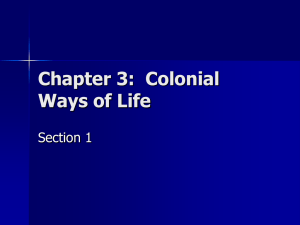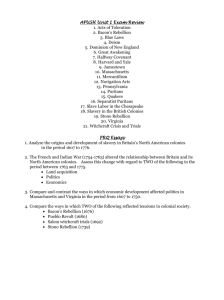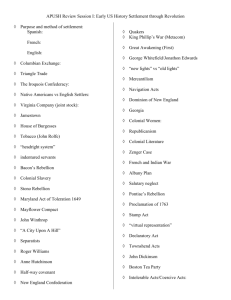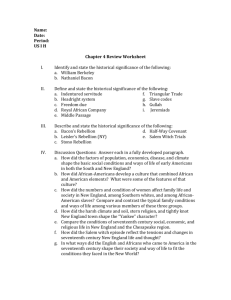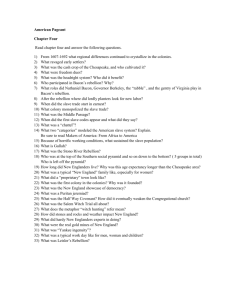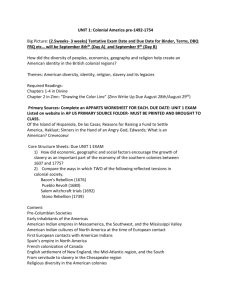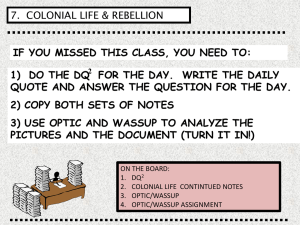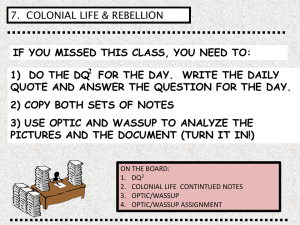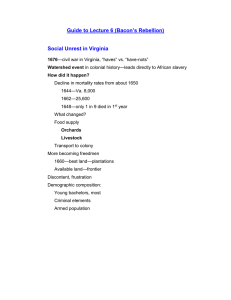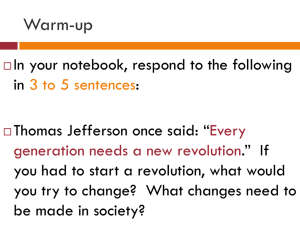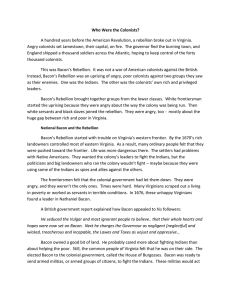The Declaration of Independence and Rebellion
advertisement
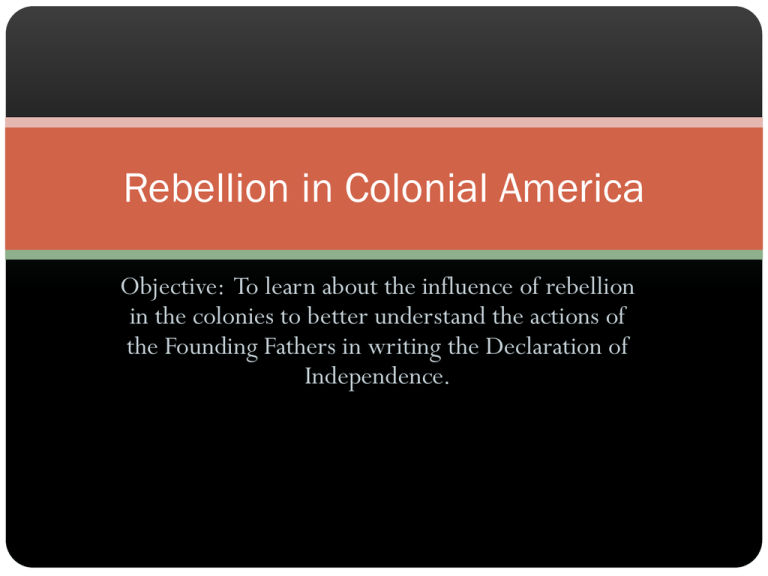
Rebellion in Colonial America Objective: To learn about the influence of rebellion in the colonies to better understand the actions of the Founding Fathers in writing the Declaration of Independence. Before the Declaration of Independence Rebellions Bacon’s Rebellion, 1676 Bacon’s Declaration What brought all of these people together? Bacon’s Declaration, July 1676 Read Bacon’s Declaration with a partner. Summarize the 8 sections in the Declaration, and what will happen if the demands are not met. Vocabulary to help you with the reading: Magistrate: a civil officer charged with the administration of the law, such as a minor judicial officer (Justice of the Peace) or the judge of a police court. Countermanded: to revoke or cancel. Confederacy: an alliance between persons, parties, states, etc., for some purpose. Pernicious councilors: Harmful council members Causes for the Rebellion Indians The aristocracy Map: “America septentrionalis” by Hondius,1640. What does Bacon’s Rebellion tell us about Colonial America? The people involved Indentured Servants Example of a contract: “I, ___ ,of ___, do firmly oblige myself as a faithful and obedient servant in all things whatsoever, to serve and dwell with ___ according to the laws and customs and orders for servants in Carolina.” “The said ___ providing for his servant all such necessaries in the time of his/her service and at the expiration of the term as the laws oblige masters to perform to their servants.” What does Bacon’s Rebellion tell us about Colonial America? Slaves Indians Separation of the people Racism and class Development of the middle class 1776 “Around 1776, certain important people in the English colonies made a discovery that would prove enormously useful for the next two hundred years. They found that by creating a nation, a symbol, a legal unity called the United States, they could take over land, profits, and political power from favorites of the British Empire. In that process, they could hold back a number of potential rebellions and create a consensus of popular support for the rule of a new, privileged leadership.” Howard Zinn, A People’s History of the United States Thomas Paine & Common Sense Released January 10, 1776. The Revolutionary War began in April of 1775. Why rebel? With your partner, skim through Chapter 6 of your textbook and answer the following question: What British policies and events made the colonists become fed up with British rule? Then read the excerpts from Common Sense by Thomas Paine. Answer the corresponding questions in the packet. Vocabulary to help you with the reading: Reconciliation: to become friendly with again after a split. Sycophant: a person who uses flattery to win favor from individuals wielding influence Exit Ticket Answer on a separate sheet of paper: Compare your notes in your note catcher to your partner’s. Did he/she get certain things that you missed? What do you need to work on as a note-taker in order to succeed in a lecture environment? Is there anything I can do as your teacher to help you with your notetaking? Homework Look at the revisions made on the original Declaration of Independence by Benjamin Franklin and John Adams.
